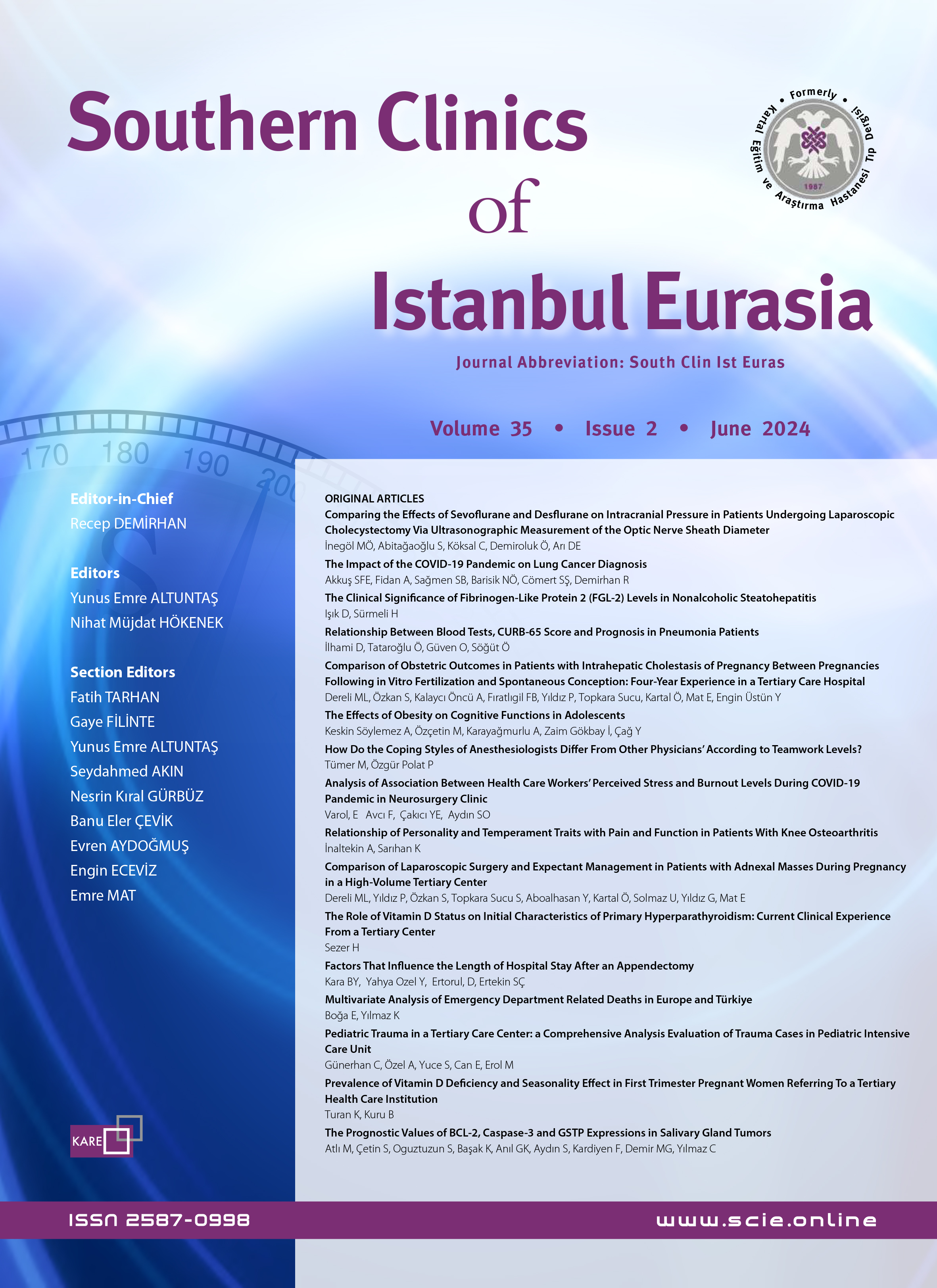The Intensity of PLA2R and C4d Immunoexpression in Primary Membranous Nephropathy
Deniz Filinte1, Hakkı Arıkan2, Mehmet Koç2, Handan Kaya1, İshak Çetin Özener2, Gamze Akbaş11Department of Pathology Marmara University Faculty of Medicine, İstanbul, Turkey2Department of Nephrology, Marmara University Faculty of Medicine, İstanbul, Turkey
INTRODUCTION: Antibodies against the phospholipase A2 receptor (PLA2R) on podocyte membranes result in the formation of immune complexes that cause loss of function of the glomerular basement membrane in primary membranous nephropathy (PMN). It has also been demonstrated that there is a deposition of complement 4d (C4d) in the glomeruli in PMN. The present study aims to evaluate PLA2R and C4d immunoexpressions in PMN cases and search the correlation with the clinical parameters.
METHODS: In this study, clinicopathological data and paraffin-embedded specimens were collected from 51 patients. The formalin-fixed paraffin-embedded tissues were stained using routine hematoxylin-eosin, periodic acid-Schiff, and silver methenamine stains and immunostained for anti-PLA2R and C4d. Ten normal kidney tissues and 10 focal segmental glomerulosclerosis (FSGS) cases were selected as controls for PLA2R and C4d immunoexpression.
RESULTS: Of the PMN cases, 51 (100%) cases were positive for PLA2R, including 15 (29%) cases that scored 2+, and 36 (71%) cases that scored 3+. Forty of the 51 cases (78%) were positive for C4d. The percentages of cases staining positively for C4d, per scoring group, were as follows: 31 (61%) cases faintly (1+) positive and 9 (18%) cases moderately (2+) positive. No strong positivity was observed. All of the control cases (100%) were negative for PLA2R and C4d. There was no statistically significant difference between the intensity of the staining of PLA2R and the staining of C4d, proteinuria levels, creatinine levels, and complement 3 (C3) positivity. Similarly, there was no statistically significant difference between the intensity of the staining of C4d and proteinuria levels, creatinine levels, and C3 positivity.
DISCUSSION AND CONCLUSION: Immunohistochemical detection of PLA2R and C4d is a safe and easy method for the diagnosis of PMN. In cases where fresh tissue is not available for the detection of IgG and C3 using the immunofluorescence method, positivity for PLA2R and C4d with immunohistochemistry may be beneficial for the diagnosis of PMN.
Primer Membranöz Nefropati Olgularında Fosfolipaz A2 Reseptör ve Kompleman 4d Ekspresyonunun Yoğunluğu
Deniz Filinte1, Hakkı Arıkan2, Mehmet Koç2, Handan Kaya1, İshak Çetin Özener2, Gamze Akbaş11Marmara Üniversitesi Tıp Fakültesi, Patoloji Bölümü, İstanbul, Türkiye2Marmara Üniversitesi Tıp Fakültesi, Nefroloji Bölümü, İstanbul, Türkiye
GİRİŞ ve AMAÇ: Primer membranöz nefropatide (PMN), podosit membranlarındaki fosfolipaz A2 reseptörüne (PLA2R) karşı gelişen antikorlar, immün komplekslerin oluşumuna neden olarak glomerular bazal membranda fonksiyon kaybına sebep olurlar. Ayrıca PMNde glomerüllerde kompleman 4d (C4d) birikimi de gösterilmiştir. Bu çalışmanın amacı, PMN olgularında PLA2R ve C4d ekspresyonlarını değerlendirmek ve klinik parametrelerle bağlantılarını araştırmaktır.
YÖNTEM ve GEREÇLER: Elli bir hastaya ait klinikopatolojik bilgiler ve parafine gömülmüş örnekleri toplandı. Formalin fikse ve parafine gömülmüş dokular rutin hematoksilen-eozin, periyodik asit schiff ve gümüş methenamin boyalarıyla ve anti-PLA2R (CL0474; Atlas Antikorları) ve C4d (Poliklonal; CellMarque) immün boyalarıyla boyandı. On adet normal böbrek dokusu ve 10 adet fokal segmental glomeruloskleroz (FSGS) olgusu PLA2R ve C4d ekspresyonu için kontrol olarak seçildi.
BULGULAR: PMN olgularının hepsi (n=51) (%100) PLA2R ile pozitifti, 15i (%29) 2+, 36sı (%71) 3+ olarak skorlandı. Olguların 40ı (%78) C4d pozitifti. C4d boyanma oranları: 31 olguda zayıf pozitif (1+) (%61), dokuz olguda orta şiddette pozitif (2+) (%18) olarak gözlendi. Kuvvetli boyanma gözlenmedi. Tüm kontrol olguları PLA2R ve C4d ile negatifti. PLA2R ve C4d boyanma yoğunluğu ile proteinüri seviyeleri, kreatinin seviyeleri ve kompleman 3 (C3) pozitifliği arasında istatistiksel olarak anlamlı bir fark saptanmadı. Benzer olarak C4d boyanma yoğunluğu ile proteinüri seviyeleri, kreatinin seviyeleri ve C3 pozitifliği arasında istatistiksel anlamlı bir fark saptanmadı.
TARTIŞMA ve SONUÇ: PMN tanısında PLA2R ve C4dnin immünohistokimyasal olarak saptanması güvenli ve kolay bir metoddur. İmmünfloresan yöntemiyle IgG ve C3 saptanmasını sağlayacak yeterli dokunun olmadığı durumlarda, immünhistokimyasal olarak PLA2R ve C4d pozitifliği PMN tanısında faydalı olabilir.
Manuscript Language: English




















